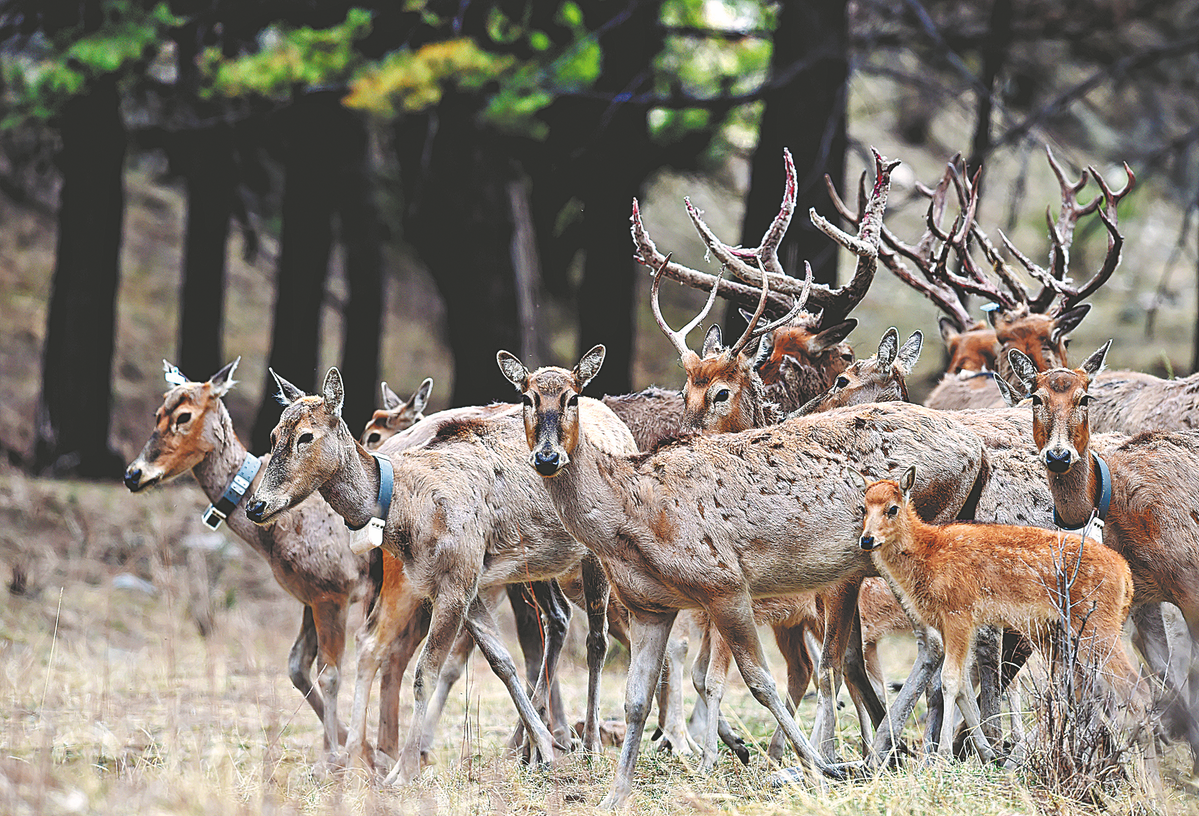

The National Forestry and Grassland Administration launched the ambitious conservation program in 2019 to expand the habitat of the species. Experts came to the nature reserve for inspection, and an area with plenty of food and water was chosen to release the deer.
Research personnel have been tracking the animals through GPS-enabled collars. It has helped experts monitor health and movement of the herds.
The milu was once endemic to the middle and lower reaches of the Yellow River and the Yangtze River in China.
It was called sibuxiang because its head oddly looks like that of a horse, it has antlers of a deer, its hooves are ox-like and its tail resembles that of a donkey.
The species became extinct in the wild in the early 20th century owing to rampant hunting and loss of habitat under imperial rule, when the Qing Dynasty (1644-1911) was torn by wars.
Currently, all milu deer are direct descendants of those 18 creatures purchased around the 1900s by the 11th Duke of Bedford, who kept the animals on his estate at Woburn in the United Kingdom.
In the 1980s, the species was reintroduced in China from Woburn Abbey, starting the revival process in its homeland.
After more than three decades of concerted efforts, the milu population has grown to over 10,000, including 4,400 in the wild, courtesy of the three dedicated reserves in Nanhaizi, Dafeng and Shishou (Hubei province).
For Ma, it is a new responsibility, but he remains undeterred by challenges.
He reads avidly or calls experts to understand the species better. According to his observations, the two groups of animals from Nanhaizi and Dafeng are getting along well, and even integrating into a community.
Ma, who keeps a record of the reserve's ecological conditions, has noticed that the vegetation cover has increased, thanks to the national protection policy and ample rainfall in recent years.
The population of other wild animals also seems to be growing, as one can see more gorals and roe deer now.
"The milu originally lived in the wetlands or marshlands. This is the first time they have been released in a cold mountainous region, where the winter temperature can plummet to -30 C," says Khorintavan, deputy head of the administrative bureau of the nature reserve, who's from the Mongolian ethnic group.
The staff had built winter shelters, Khorintavan says, but the herds never went there. The milu have a thick coat, which keeps them warm, he adds. The task ahead is to see how well the calves adapt to the new environment.
The gold and iron mines in the mountains were shut down long ago, and human interference has greatly reduced. Locals are aware of the importance of wildlife conservation and this has buoyed the confidence of experts.
"The current conflict is the burgeoning milu population and its limited habitat," says Guo Qingyun, associate research fellow at the Beijing Milu Ecological Research Center in Nanhaizi.
The center has so far sent 598 milu deer to nature reserves across China.
"The birth of calves means that the Daqing Mountain nature reserve is a suitable habitat for the milu deer," Guo says.
"It is a reference for us to cultivate more potential habitats. However, it will take some time to figure out if a wild population has indeed been established there."
The male milu deer compete with one another for mating rights. They form harems comprising several females. The dominant male defends his territory against rivals until mating season is over.
Guo says the polygynous nature means the milu deer have a higher probability of inbreeding, which can lead to genetic deficiencies and low disease resistance.
"However, it is the first time that the species from Beijing and Jiangsu have established communication. This can increase their gene diversity," she says.